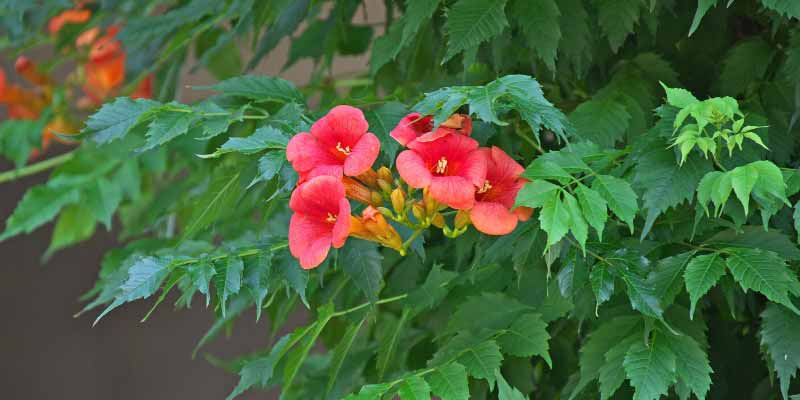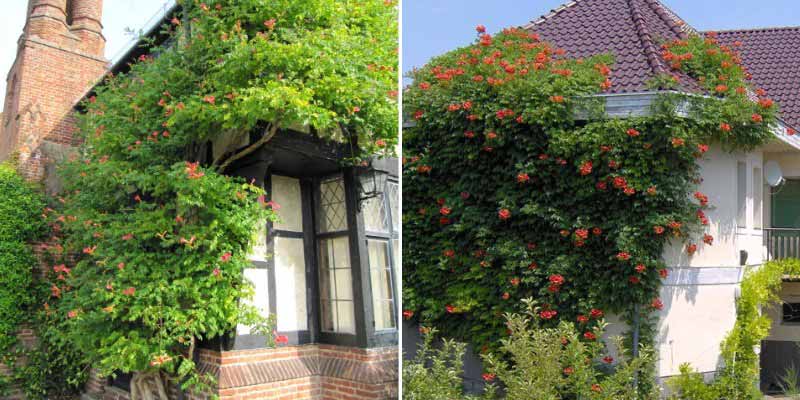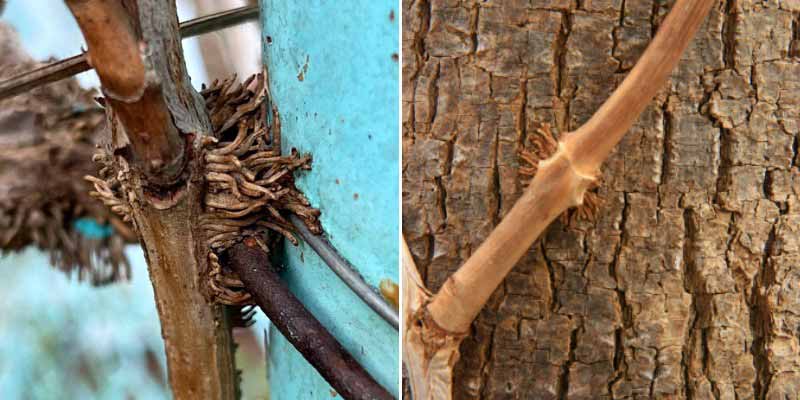The trumpet creeper, also called Campsis or Jericho trumpet, is a luxuriant and vigorous climbing plant, often used to adorn walls and pergolas. It produces trumpet-shaped flowers throughout summer, in orange, yellow or red. It can reach up to 8–10 m in height at maturity. It prefers full sun, fertile, moist and well-draining soil, and is fairly suited to mild-climate regions, although it tolerates temperatures down to −10 °C. Despite its undeniable ornamental appeal, it is sometimes necessary to remove it when it becomes a little too vigorous. Discover all our tips to achieve this!

Why removing a trumpet creeper?
The trumpet creeper is a climbing plant known for vigorous growth. When happy in its site, it tends to produce suckers, new shoots that emerge from its roots and allow it to spread. This ability can become a major nuisance when the trumpet creeper starts to invade other plants in the garden.
The roots of the trumpet creeper are both deep and robust, which gives it great resilience, notably against harsh climatic conditions. However, this vigour can also make eradication more complex. Trumpet creeper roots can damage foundations, puncture a pool liner, damage patio paving… Finally, the trumpet creeper clings to structures using its climbing roots. Over time these can damage the support, especially a wall, enlarging cracks or peeling render. If the trumpet creeper reaches your roof, it may lift tiles or damage gutters.

How to remove a trumpet creeper?
Remove the suckers
The first step to eliminate a trumpet creeper is to dig out all visible suckers around the main plant.
- Locate trumpet creeper shoots emerging from the soil (suckers) around the main plant. Suckers are stems growing from the roots that enable the trumpet creeper to spread.
- Dig to expose the rootstocks to which they are attached. Use a spade or a pickaxe for this.
- Remove the shoots and as many roots as possible from the soil to prevent the suckers from regrowing.
Fell the trumpet creeper and remove its branches and climbing roots
- Start by felling the trumpet creeper by cutting it at the base. The tool you use depends on trunk size: if not very large, a reciprocating saw will suffice; if the diameter is substantial, a chainsaw may be necessary.
- Then remove the branches and stems from their support. If they are tangled around a structure, do not hesitate to cut them into small sections with pruning shears or loppers.
- Remove the climbing roots from the wall on which they are attached. Work carefully to avoid damaging the surface. Use a sharp tool, such as a garden knife, to cut the climbing roots close to the plant base. Take care not to damage the wall. After cutting the climbing roots, you can use a wire brush to remove residues.

Remove the stump
- Expose the roots all around the stump using a spade and a pickaxe, then cut them with an axe or a reciprocating saw.
- You can try to remove the stump manually after cutting all the roots, or by using a winch.
- If the stump is too large to remove, it will need to be killed. For example, drill holes into the stump and pour in sodium chlorate. Caution: sodium chlorate is toxic and should be avoided in a natural garden. A more ecological solution is to place cloves of garlic in the holes; as they decompose they will release sulphur. Ideally drill holes across the stump about 20 cm deep and wide enough to insert a clove of garlic. Refill the holes with clay afterwards.
Feel free to consult our article on removing a tree stump
Preventing regrowth
Once you have successfully removed the trumpet creeper, it is essential to monitor the area for any regrowth. If you notice suckers, pull them out immediately, digging up as many roots as possible to prevent regrowth. Deprived of the ability to carry out photosynthesis, the trumpet creeper will eventually exhaust itself.
Which equipment to use?
Removing an invasive trumpet creeper requires a range of tools. Here are those you will need:
- A pair of gloves to protect your hands from possible splinters and cuts.
- A spade and a pickaxe to expose roots, suckers and the stump.
- An axe or a reciprocating saw to cut roots.
- Pruning shears and loppers: very useful for cutting stems and branches.
- A garden knife to cut climbing roots from the trumpet creeper without damaging the support to which it is fixed.
- Possibly a wire brush to remove residues from the climbing roots once cut.
- A ladder to cut the highest parts.
































Comments